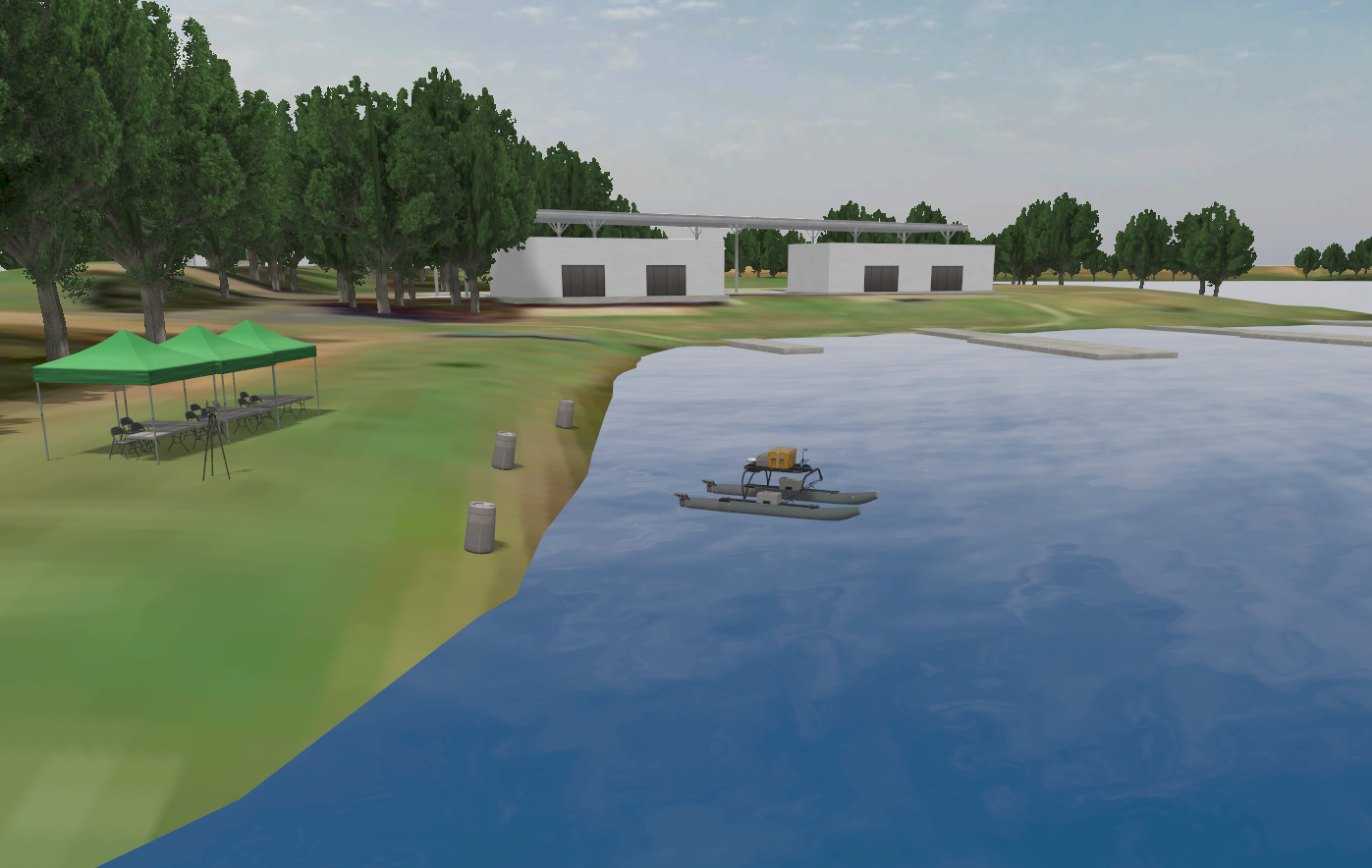-
Notifications
You must be signed in to change notification settings - Fork 180
vrx_2023 task_tutorials
For each of the individual tasks in the 2023 VRX competition we provide examples of simulation worlds and Gazebo plugins to evaluate and score task performance. General instructions pertaining to all tasks as well as instructions for running individual examples are given below.
- Detailed descriptions of each task, its application interface (API) and scoring is included in the Task Descriptions and Technical Guide, available on the VRX 2023 website.
- For instructions on how to participate in each phase of the VRX 2023 competition, please see the VRX 2023 Overview.
After launch, e.g., ros2 launch vrx_gz competition.launch.py world:=sydney_regatta, all examples given below should begin with the wamv floating on the water near the
shore, as shown:

Additional course elements will vary from task to task.
The vrx task status message provides:
- task state {Initial, Ready, Running, Finished}
- current score
- timing information
- number of WAM-V collisions
Task status is published to /vrx/task/info. We recommend that you monitor the task status during simulation. One way to do this, for example, is to run:
ros2 topic echo /vrx/task/info
In preparation for developing an automated solution, we recommend using a gamepad to drive the USV through the course. To get started quickly, try:
ros2 launch vrx_gz usv_joy_teleop.launch
For more guidance and information, check out the Teleop tutorial.
The following quick start instructions walk you through the initial process of launching your environment and subscribing to any available task-specific messages.
Task 1: Stationkeeping
Task 2: Wayfinding
Task 3: Perception
Task 4: Acoustic Perception
Task 5: Wildlife Encounter and Avoid
Task 6: Follow the Path
Task 7: Acoustic Tracking
Task 8: Scan and Dock and Deliver
| Top: VRX Tutorials | Next: Stationkeeping |
|---|